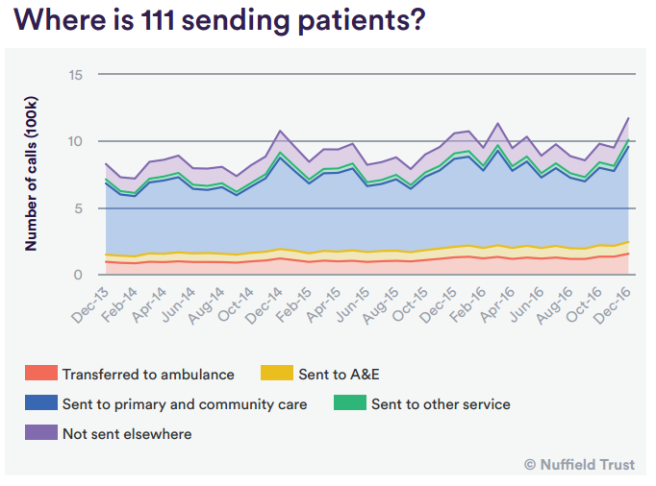An analysis of how NHS 111 has fared, especially over the winter period | Nuffield Trust

Key Points:
- The proportion of callers being dispatched from NHS 111 to emergency services over the last three years has risen. There has been a particular rise in the share of people who are passed to ambulances.
- There is great variability between different areas in how likely NHS 111 is to send people to A&E or the ambulance service. This might suggest that some areas are too likely, or not likely enough, to send people to emergency services. NHS 111 is also more likely to dispatch an ambulance than to simply send people to A&E – which is the reverse of the usual pattern of NHS use. This lends credence to claims that the service is too risk-averse in some cases.
- However, contrary to criticism that it adds to the pressure on A&E, the service overall seems to steer people away from emergency services. Patient surveys suggest as many as 8 million more people would have gone to A&E and the ambulance service over the last three years without 111. The call line also soaks up extra demand during winter, when it becomes less likely to refer people to urgent services.
- NHS 111 still answers the vast majority of calls within a minute, and few people hang up after having to hold for more than 30 seconds. However, it has not met its target of answering 95 per cent of calls within 60 seconds for two-and-a-half years, and it seems prone to serious under-performance when calls spike after Christmas and the New Year.
Read the full report here
